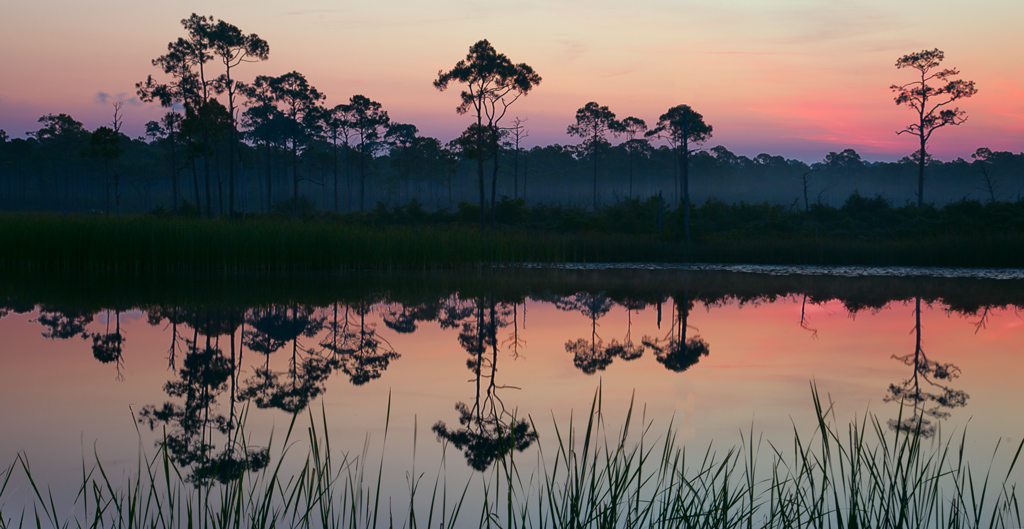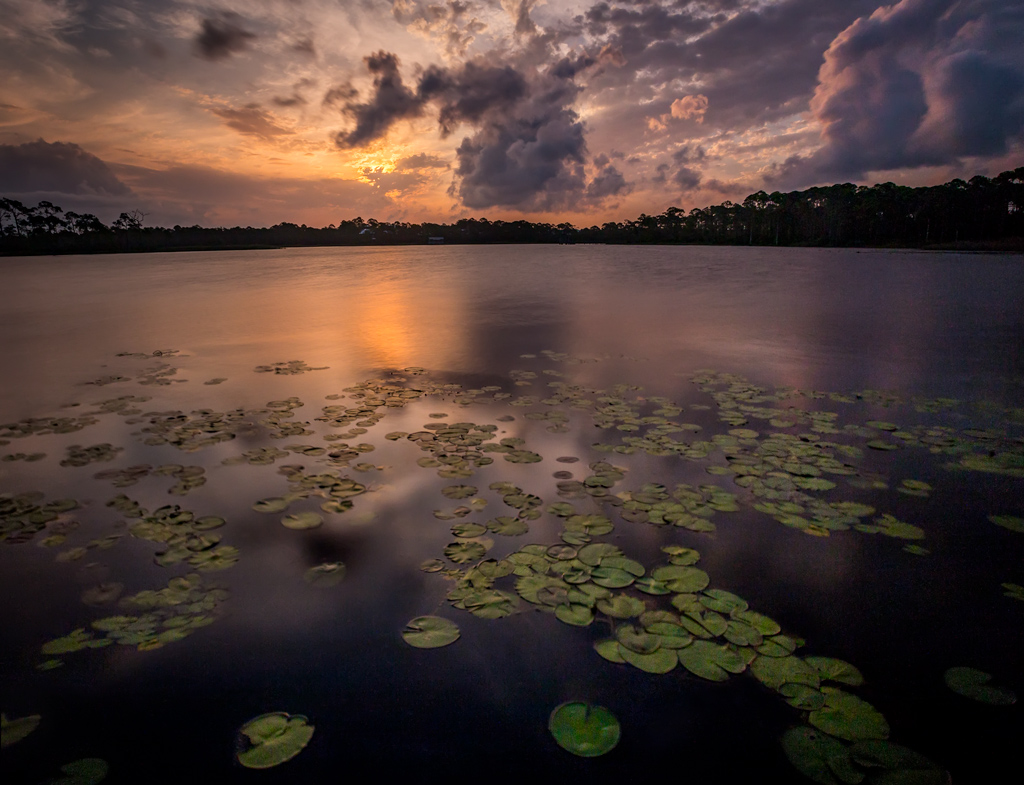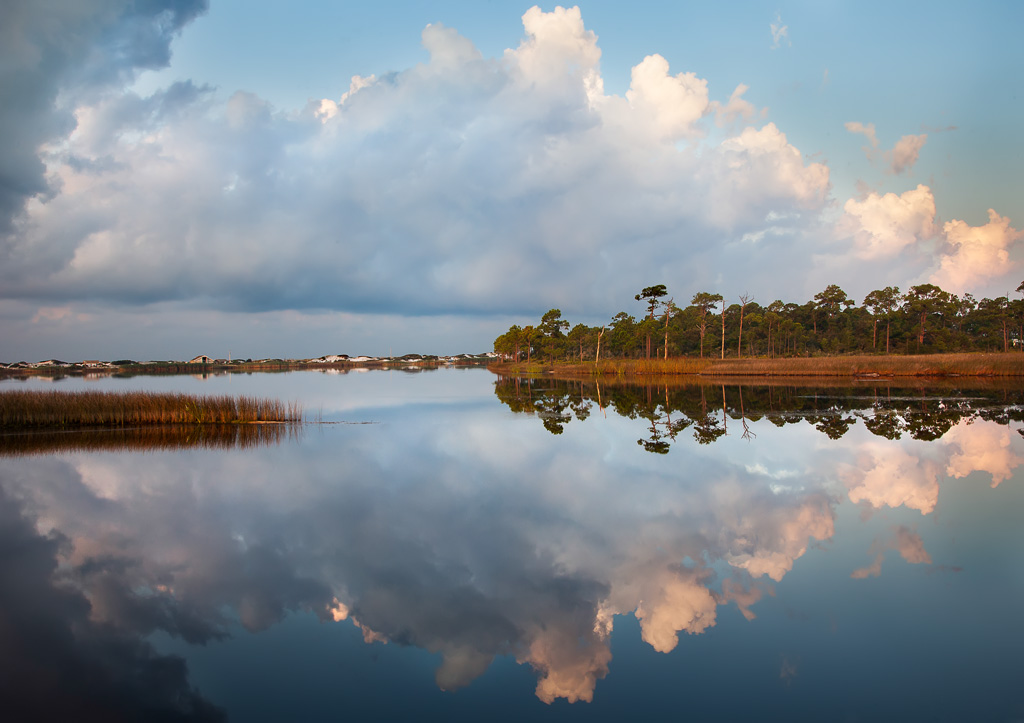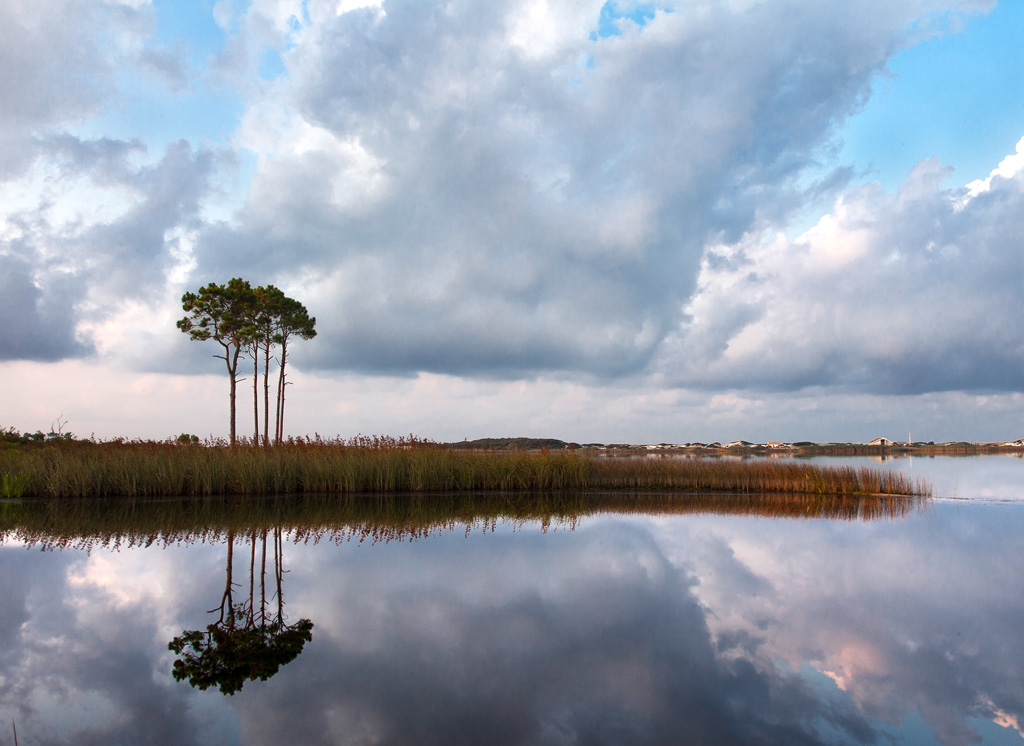How to capture this photogenic coastal dune lake near Seaside on the 30A.

If you live in the midwest United States, you have probably seen stickers on cars from time to time that look something like this:

30A is a scenic coastal road in the Florida panhandle that stretches for 28.5 miles along the Gulf of Mexico. It has picturesque little beach towns like Seaside (famous as the filming location of The Truman Show) and Rosemary Beach. There are several lakes and parks, as well as access to beaches. Overall, it is one of the best places to visit and photograph along the Gulf Coast. It is well worth a visit.
I vacation with my family in the area every year and I have been up and down the road many, many times. I have stopped in many locations to photograph as well. While there are many great places to stop, for me the best place for outdoor photography along the 30A is a place called Western Lake.
Getting to Western Lake
Western Lake is located just to the west of Seaside. It is a coastal dune lake, which means means it isn’t directly connected to the ocean, but it is close enough that it is exchanging water with the ocean. It is located in land protected by the State of Florida as Point Washington State Forest. If you are already traveling on 30A, you will actually pass over Western Lake as you head east into Watercolor (or west coming out of it).
If you are not traveling on 30A, you will no doubt be coming from Highway 98, which is a highway that runs along most of the Florida panhandle. The best way to get to Western Lake from Hwy 98 is to take County Road 283, which is at an intersection with a traffic signal. Go south on 283 until you reach 30A, then turn left.
As mentioned previously, you will pass over Western Lake on your way toward Watercolor and Seaside. You will actually pass over it twice, as there are different arms to the lake, and the second time is the best place to stop. There is no designated parking area, but there are places along the road where you can pull over and park for a while. Just be careful you don’t park in the bike/jogging path. The primary mode of transportation along 30A seems to be the bicycle, so that path is heavily traveled (even early in the morning) so you don’t want to block that.

When to Go
This leads to the question of when to visit this location. It will probably come as no surprise that you should go before sunrise. I know it is difficult to be up that early, but it is just the best time. The light is the best. You can also go around sunset, but there will be a lot more traffic and a lot more people out.
As with most outdoor photography, avoid the middle of the day if at all possible. It just never seems to work out. That is true in most locations, and I can attest it is true at Western Lake, where I have taken many photos in the middle of the day simply because I happened to be in the area. On bright sunny days the contrast and shadows destroy your pictures. On cloudy days, the picture will be flat. Stick to sunrise and sunset.

Exposing Your Shot
There is some wildlife here, but for the most part your shots will be static landscapes/seascapes. As mentioned previously, you will also want to be here before dawn or at sunset, in low light environments. For that reason, it pays to have a tripod when shooting here.
That makes your task much easier when it comes to exposure. With your camera on a tripod, set your camera’s ISO on the lowest native setting, which is usually ISO 100. Stop down your aperture to a moderate to small setting, like f/11 – f/16. Then just use whatever shutter speed your camera requires for a proper exposure. It doesn’t matter how slow the shutter speed is since the camera is steady on a tripod. There will be no problems with camera shake.
Now you can concentrate on composition.

Composing Your Shot
If your photo is of the local plant or wildlife, then your composition is easy. Start by putting as much of the subject in the picture as you can. Concentrate on your subject and you cannot go wrong.
Often, , however, you want to capture an entire scene. In that case, you are trying to fashion a picture with a discrete foreground, center of interest, and background. That is more tricky. Let’s work back to front to come up with a great composition:
- Background: The first thing to do is establish the background of your picture. This is the easy part. You will have it in mind before you even lift the camera. Usually, it is the sky. If not, it will be the trees. At Western Lake, I think you will find that it is almost always the sky. Being a coastal area, there are usually large puffy clouds that result in interesting skies.
- Center of Interest: The next thing to do is find a subject or center of interest for your photo. You don’t want just a lake scene with nothing holding the picture together. Usually you will use something like a particularly tall tree or a prominent cloud.
- Foreground: Finally, decide on the foreground. This is the hard part. It will require much of your mental energy as you set up these shots. The problem you will face is that it is hard to get close to the edge of the water. That is partially due to the marshy conditions, and also due to the tangled vegetation in some areas. As you can probably tell from the pictures in this article, I am particularly fond of using reflections in the water for the foreground. You want the water to be very still, and if it isn’t then you might need to use a neutral density filter. I also like to use lily pads, which are frequently on large portions of the water.
Use these elements to set up your composition and you should end up with a nice shot. You may want to bracket your photos since the sky will no doubt be much brighter than the foreground.

What Else is Nearby?
After you have gotten your shots of Western Lake, you may want to check out some of the other places in the area. There are a plethora of other things to see and do along the 30A. In particular, don’t miss the villages of Seaside and Rosemary Beach. I’d recommend stopping to eat in either of them. There are also several places where you can access the beach, as well as other lakes.

Rather than detail that here, I’m just going to refer you to the authorities on the matter, which are the folks at 30A.com. That is where the maps above came from. They list lots of things to do, current events, and other interesting information about the places along 30A.

